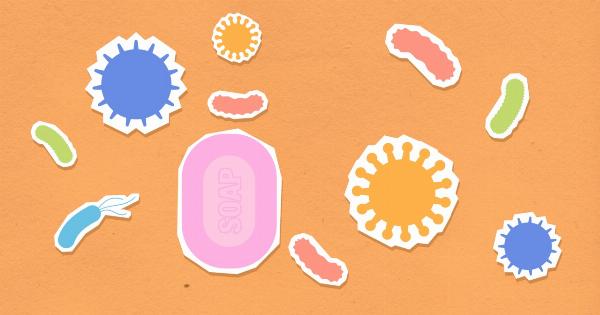Germs are microscopic organisms that can live and thrive in various environments. They are the culprits behind many illnesses and infections.
While it’s impossible to completely eliminate all germs from our surroundings, knowing where they love to hang out can help us take precautions to minimize the risk of getting sick.
1. Kitchen Sink
The kitchen sink is a breeding ground for germs, especially if not cleaned regularly. It comes into contact with raw food, dirty dishes, and can become a reservoir for bacteria, including E. coli and salmonella.
To keep your kitchen sink germ-free, make sure to clean it with hot soapy water and disinfect regularly.
2. Cutting Boards
Cutting boards provide an ideal surface for pathogens to thrive. They come into contact with raw meat, vegetables, and other food items, providing an opportunity for cross-contamination.
It is recommended to have separate cutting boards for different food groups and to wash them thoroughly with hot soapy water after each use.
3. Toothbrush Holders
Toothbrush holders are often overlooked when it comes to cleaning. However, they can harbor germs, including streptococcus and staphylococcus. Clean your toothbrush holder regularly by rinsing it with hot water or running it through the dishwasher.
4. Bathroom Faucet Handles
We frequently touch bathroom faucet handles, potentially transferring germs from our hands to the surface. Regularly sanitize bathroom faucet handles by wiping them with disinfectant wipes or spraying them with a household disinfectant cleaner.
5. Cell Phones
Cell phones are notorious for harboring germs. They come into contact with our hands, faces, and other surfaces throughout the day.
Clean your cell phone regularly with a soft cloth dampened with isopropyl alcohol or use disinfectant wipes specifically designed for electronic devices.
6. Grocery Cart Handles
Supermarket carts are touched by numerous people throughout the day, making them a hotbed for germs. Protect yourself by using antibacterial wipes to clean the cart handles before use.
7. Computer Keyboards
Computer keyboards can accumulate bacteria, especially if we snack while working or fail to clean our hands before typing. To clean your keyboard, unplug it and gently wipe the keys and surfaces with a cloth dampened with isopropyl alcohol.
8. TV Remote Controls
TV remotes are often shared by household members and can harbor pathogens. Clean your TV remote regularly by using disinfectant wipes or alcohol wipes to eliminate germs.
9. Money
Money changes hands frequently and can be a carrier for bacteria and viruses.
While we can’t avoid using money altogether, it’s crucial to wash our hands thoroughly after handling cash or use hand sanitizer if washing facilities are not available.
10. Gym Equipment
Gym equipment, including treadmills, weights, and yoga mats, often harbor bacteria, sweat, and bodily fluids. Protect yourself by wiping down equipment before and after use, and consider using your own mat or towel.
11. Kitchen Sponge
Kitchen sponges can quickly accumulate bacteria due to their damp environment. To sanitize your kitchen sponge, wet it thoroughly and heat it in the microwave for two minutes. Replace sponges regularly to minimize the risk of contamination.































